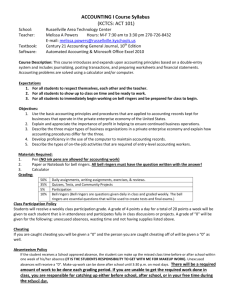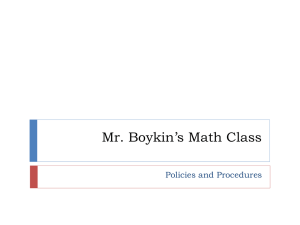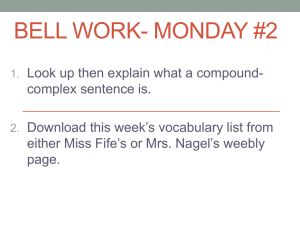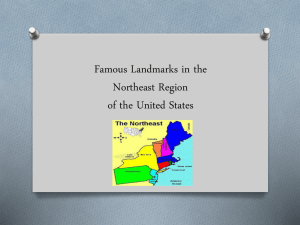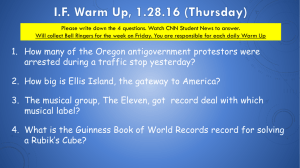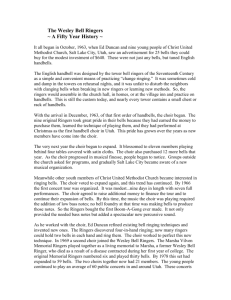Foods I Bellringers - Anderson County Schools
advertisement
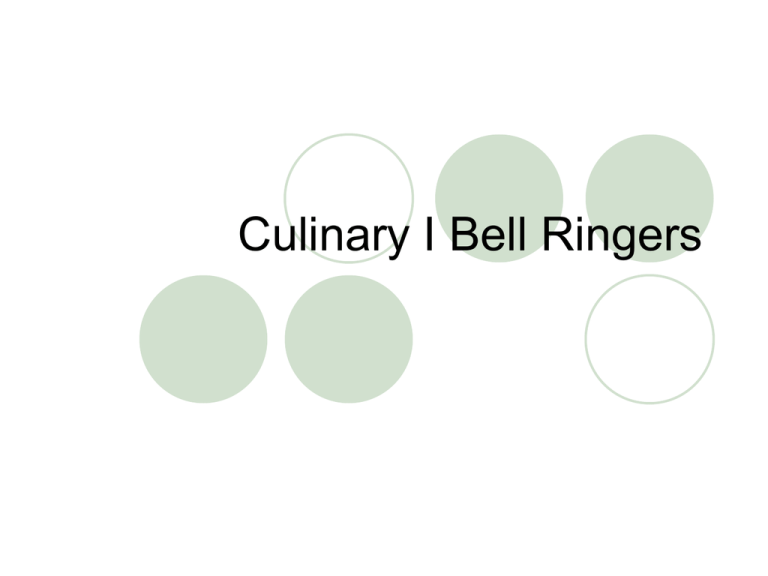
Culinary I Bell Ringers Bell Ringers Week 1 11/15- What do you most look forward to learning in Culinary I? 11/16- What are the differences between the service staff and food preparation positions? 11/17- Describe two types of management job opportunities. 11/18- Contrast apprenticeships and certificate programs. Bell Ringers Week 2 11/21- What are two advantages of corporate training programs? 11/22- Name three valuable foodservice skills that you can develop while in high school. 11/23- No School 11/24- No School 11/25- No School Bell Ringers Week 3 11/28- List the kinds of resources leaders are expected to use effectively on the job. 11/29- List five sources for job leads. 11/30- What is the purpose of a résumé? 12/1- What qualities contribute to developing a strong work ethic? 12/2- What sources can be used for networking? Bell Ringers Week 4 12/5- What is cross-contamination? 12/6- Explain the difference between biological and chemical hazards. 12/7- Identify the causes of foodborne illnesses. 12/8- What is the most common source of cross-contamination? 12/9- What is the purpose of the HACCP system? Bell Ringers Week 5 12/12- What are two things you can do when preparing fruits and vegetables to help reduce the growth of microorganisms? 12/13- What kind of hazard can human hair pose to food? 12/14- What are the two most important aspects of candy making? 12/15- List three tips for preventing unwanted crystallization during candy making. 12/16- How should most candies be stored? MERRY CHRISTMAS!!!! Bell Ringers Week 6 1/2- Give an example of an interfering agent. 1/3- What is the difference between a seasoning and a flavoring? 1/4- Name five herbs and five spices and the forms in which they are available. 1/5- When should spices be added to foods? 1/6- How should you properly store dry herbs? Bell Ringers Week 7 1/9- How do herbs differ from spices? 1/10- Identify three classifications of soup. 1/11- Explain the difference between a broth and a consommé. 1/12-What is an hors d’ oeuvre? 1/13- Name two guidelines for preparing hot appetizers. Bell Ringers Week 8 1/16- No School 1/17- Explain the different types of appetizer service: table, buffet, and butler. 1/18- Name two guidelines for preparing hot appetizers. 1/19- Explain why irradiation is used to process meat. 1/20- Name the fabricated cuts of pork and beef. Bell Ringers Week 9 1/23-Compare how high-heat cooking and lowheat cooking affect meat. 1/24- Explain how to take the internal temperature of meat and why this is important. 1/25- Describe at least two cooking methods that can be used with meat. 1/26- Which US city has a brown bread, a cream pie, and baked beans named after it? 1/27- Where in California did cioppino originate? Bell Ringers Week 10 2/6- No School 2/7- How do most cooks believe a true barbeque in Texas should be seasoned? 2/8- Where does most of the food in Finland come from? 2/9- What group colonized the Caribbean Islands and influenced their cuisine? 2/10- For what food do the Portuguese have 365 preparation methods for? Bell Ringers Week 11 2/13- How do foods of Uruguay compare to foods of its neighboring countries, Brazil and Argentina? 2/14- How does starch function in cake production? 2/15- What are three ways to test cakes for doneness? 2/16- What is the best temperature for creaming? Why? 2/17- How long should cakes cool before being removed from the pan? Bell Ringers Week 12 2/20- No School 2/21- How should frosted cakes be stored? 2/22- List the steps in making an angel food cake. 2/23- Define sponge cake. 2/24- What are some things I could do to improve upon Culinary I?
